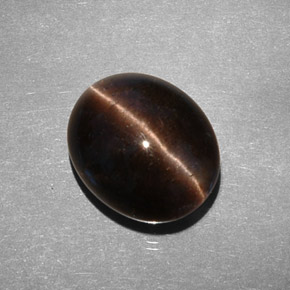The Gemstone Scapolite

Scapolite is a common mineral, and its typical habit is in opaque and uninteresting forms. However, several unique localities provide gemmy transparent forms of this mineral, which make a rare and pretty gem. However, despite its lovely colors, Scapolite has been limited from becoming a more mainstream gemstone due to its relatively low hardness.
Color
?
White, Colorless, Yellow, Orange, Brown, Pink, Purple
Chemical Formula
?
(Na,Ca)
4(Al,Si)
3Si
6O
24)(Cl,CO
3)
Additional Properties
|
Refractive Index
?
1.54 - 1.58 |
Double Refraction
?
-0.006 to -0.0037 |
Transparency
?
Transparent to opaque |
SG
?
2.5 - 2.8 |
Luster
?
Vitreous |
| Cleavage ?
2,2 |
All About
Several habits of Scapolite are used as gemstones. The main gemstone color is yellow, followed by purple. Other colors such as pink, brown, and colorless do exist, but these are less common and seldom cut into gemstones. Scapolite often contains dense
inclusions of parallel
fibers, and when
polished produce an excellent
cat's eye effect. When cut into
cabochons, these Scapolite gemstones make fine
cat's eyes. Another gemstone form of Scapolite is an
opaque, yellowish or gray opaque Scapolite associated with
Diopside. This habit is well-known from an occurrence in Quebec, Canada, and produces a
mottled gemstone that is popular for its strong
fluorescence in both
longwave and
shortwave ultraviolet light.
Uses
?
Scapolite is used mainly a collector and hobbyist gemstone, especially in its yellow and purple colors.
Cat's eye Scapolites are also used as minor gemstones and cut into
cabochons. The
opaque yellow
fluorescent variety described above is occasionally also used as a gemstone and mostly cut into cabochons.
Treatments & Enhancements
?
Scapolite gemstones are generally natural and not enhanced, though it may be possible for certain forms to turn pink upon
heat treatment.
Scapolite Sources
?
Gemstone forms of Scapolite come from Tanzania, Madagascar, Afghanistan, Tajikistan, India, China, Burma (Myanmar), Brazil, and Canada.
Similar Gemstones
?
Chrysoberyl,
Golden Beryl, and
Topaz all have a much greater
hardness than yellow Scapolite.
Amethyst and
Tourmaline are harder than purple Scapolite, and are usually more intensely colored.
Kunzite has a more distinct
pleochroism over Scapolite and is usually more pink than purple.
Scapolite in the Rough Photos
?